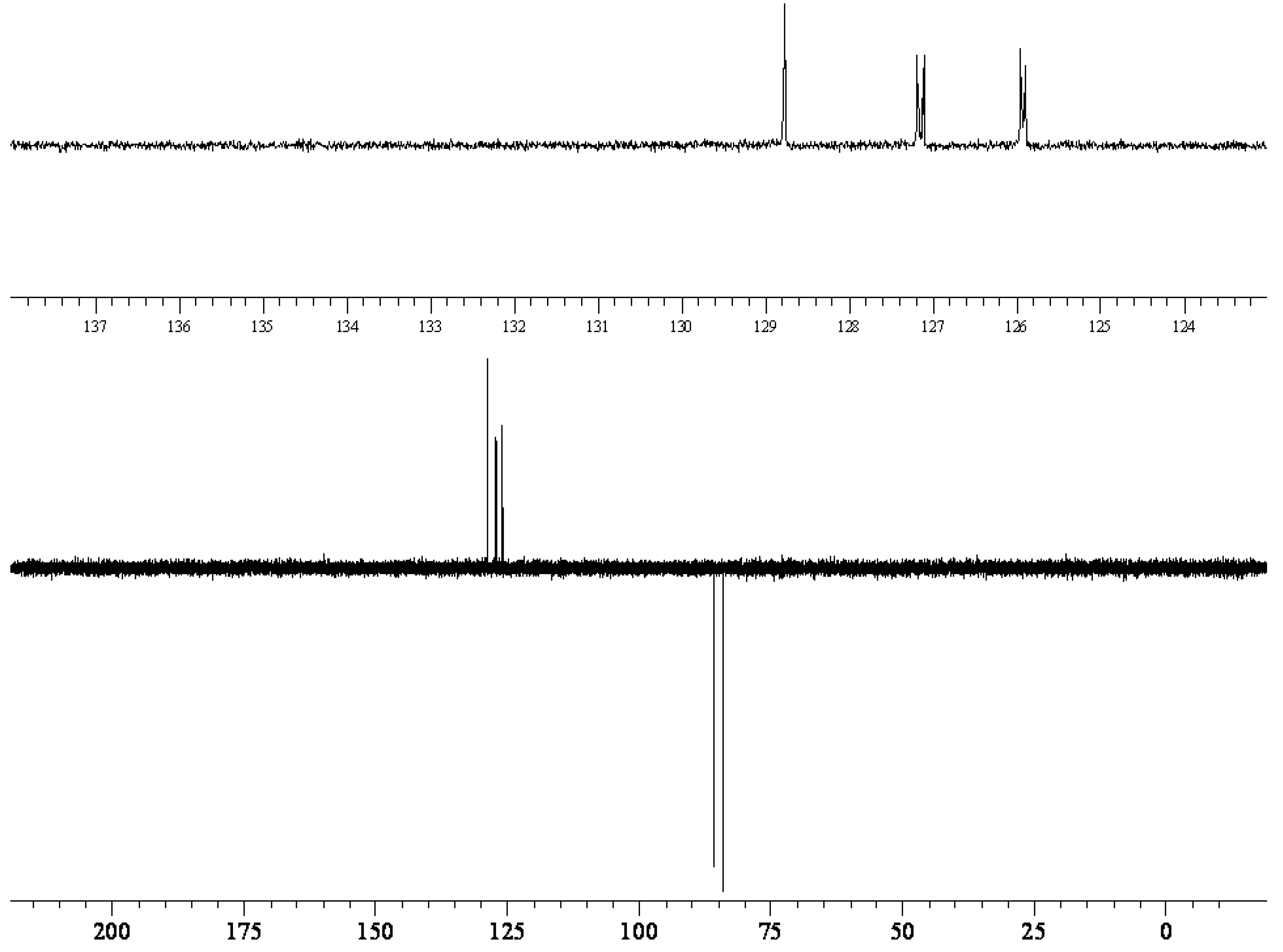Synthesis of 2,7-Bis(fluoromethyl)naphthalene
1. Introduction

2. Experimental
2.1. General
2.2. 2,7-Bis(bromomethyl)naphthalene (1)
2.3 2,7-Bis(fluoromethyl)naphthalene (2)
3. Conclusion
Supplementary materials
Supplementary File 1Supplementary File 2Supplementary File 3References
- Maslak, P.; Narvaez, J.N. Mesolytic Cleavage of CC Bonds. Com- parison with Homolytic and Heterolytic Processes in the Same Substrate. Angew. Chem. Int. Ed. Engl. 1990, 29, 283–285. [Google Scholar] [CrossRef]
- Ried, W.; Bodem, H. Characteristic Derivatives of the di- and Trimethylnaphthalenes. Chem. Ber. 1958, 91, 1981–1982. [Google Scholar]
- Biewer, M.C.; Biehn, C.R.; Platz, M.S.; Despres, A.; Migirdicyan, E. An exceptionally Simple Method of Preparation of Biradicals. 2. Low-temperature Fluorescence Spectra and Ambient Temperature Laser-induced Fluorescence Spectra of 1,3-, 1,6-, 2,6-, and 2,7-Naphthoquinodimethane. J. Am. Chem. Soc. 1991, 113, 616–620. [Google Scholar] [CrossRef]
- Olah, G.A.; Nojima, M.; Kerekes, I. Synthetic Methods and Reactions II1. Hydrofluorination of Alkenes, Cyclopropane and Alkynes with Poly-Hydrogen Fluoride/Pyridine (Trialkylamine) Reagents. Synthesis 1973, 779–780. [Google Scholar] [CrossRef]
- Olah, G.A.; Nojima, M.; Kerekes, I. Synthetic Methods and Reactions IX. Fluorination of Secondary- and Tertiary-Alcohols with Polyhydrogen Fluoride/Pyridine(Trialkylamine) Reagents. Synthesis 1973, 786–787. [Google Scholar] [CrossRef]
- Clark, J.H. Fluoride Ion as a Base in Organic Synthesis. Chem. Rev. 1980, 80, 429–452. [Google Scholar] [CrossRef]
- Still, W.C.; Kahn, M.; Mitra, A. Rapid Chromatographic Technique for Preparative Separations with Moderate Resolution. J. Org. Chem. 1978, 43, 2923–2925. [Google Scholar] [CrossRef]
- Silverstein, R.M.; Bassler, G.C.; Morrill, T.C. Spectrometric Identification of Organic Compounds, 5th ed.; Wiley: New York, 1991; p. 281. [Google Scholar]
- Adcock, W.; Abeywickrema, A.N. Conformational preference of the fluoromethyl group in some benzyl fluorides: a 13C N.M.R. study. Aust. J. Chem. 1980, 33, 181–187. [Google Scholar] [CrossRef]


© 2008 by the authors; licensee Molecular Diversity Preservation International, Basel, Switzerland. This article is an open-access article distributed under the terms and conditions of the Creative Commons Attribution license (http://creativecommons.org/licenses/by/3.0/).
Share and Cite
Bogdanov, J.; Maslak, P. Synthesis of 2,7-Bis(fluoromethyl)naphthalene. Molbank 2008, 2008, M567. https://doi.org/10.3390/M567
Bogdanov J, Maslak P. Synthesis of 2,7-Bis(fluoromethyl)naphthalene. Molbank. 2008; 2008(3):M567. https://doi.org/10.3390/M567
Chicago/Turabian StyleBogdanov, Jane, and Przemyslaw Maslak. 2008. "Synthesis of 2,7-Bis(fluoromethyl)naphthalene" Molbank 2008, no. 3: M567. https://doi.org/10.3390/M567



